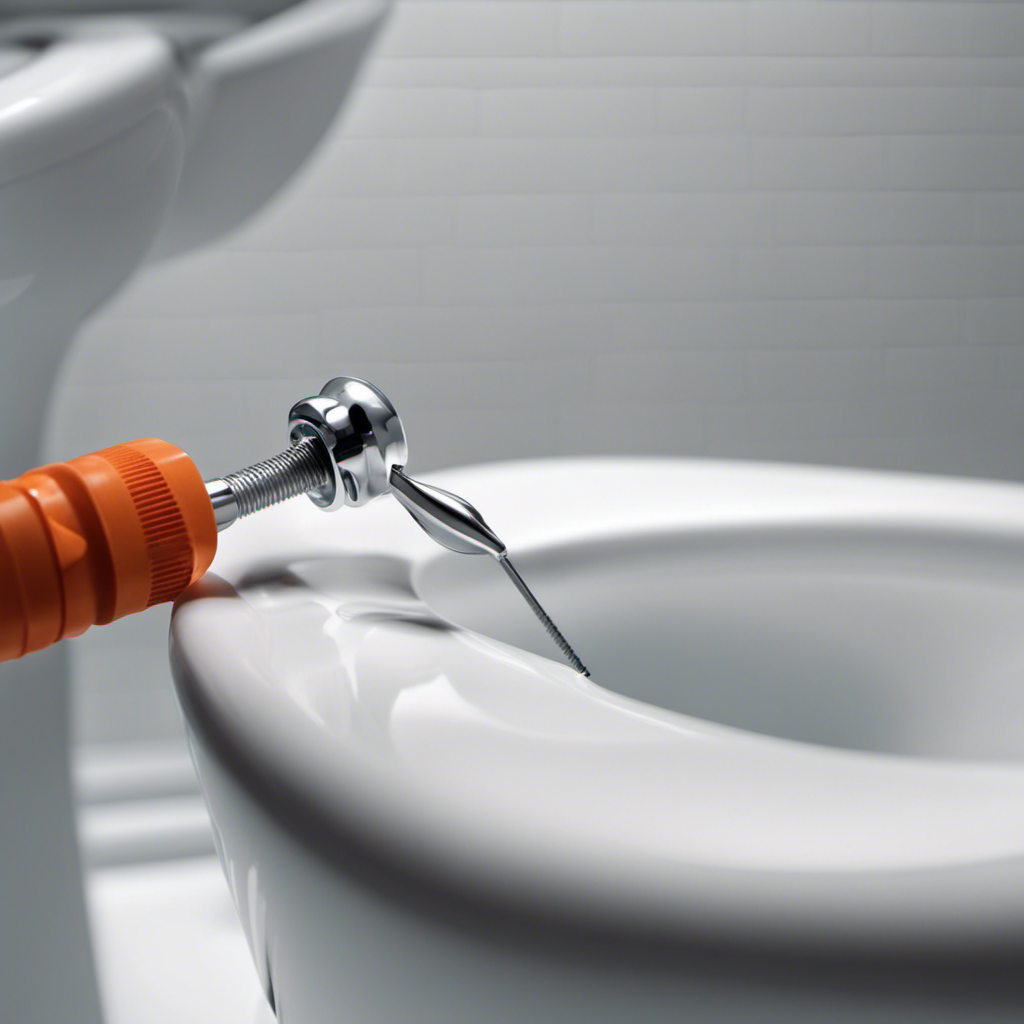As a homeowner, I’ve learned the hard way that even the smallest toilet leak can lead to big problems down the line. That’s why it’s crucial to know how to spot the signs of a leak before it becomes a costly and time-consuming repair.
In this article, I’ll walk you through the step-by-step process of determining whether your toilet is leaking or not. By using simple techniques and tools, you’ll be able to identify and address any leaks, saving yourself from potential headaches in the future.
Key Takeaways
- Common signs of a toilet leak include a hissing sound, constantly running toilet, fluctuation in water levels in the toilet bowl, water pooling around the base of the toilet, and a musty odor in the bathroom.
- To check for water on the floor, look for water near the toilet on the floor, examine the water supply line for signs of water seepage, and use a leak detection dye kit to identify leaks from the tank into the bowl.
- To examine the toilet bowl for leaks, observe the water in the bowl for changes in color or movement, check the water level in the bowl for constant changes without flushing, look for discoloration or staining in the water, and observe the movement of the water after flushing.
- To inspect the toilet tank for leaks, check the water level in the toilet tank, adjust the float valve if the water level is too high, examine the flapper valve for wear or damage, and perform regular maintenance to prevent water wastage and damage.
Common Signs of a Toilet Leak
If you notice a constant hissing sound coming from your toilet, it’s a sign that it may be leaking. Toilet leak detection is crucial for water damage prevention.
Besides the hissing sound, there are other common signs to look out for. One indication is a constantly running toilet, even when it’s not in use. Another sign is a fluctuation in water levels. If you notice that the water level in the toilet bowl is constantly changing, it could be due to a leak.
Additionally, if you see water pooling around the base of the toilet or notice a musty odor in the bathroom, these are also signs of a possible leak.
It’s important to address these issues promptly to prevent further damage and save water.
Checking for Water on the Floor
Check for water on the floor near the toilet to determine if there is a leak. This is a common sign of a toilet leak and should not be ignored.
To properly check for leaks, start by examining the water supply line. Look for any visible signs of water seepage or dampness along the supply line.
If there are no visible signs, you can use a leak detection dye kit to further investigate. This kit contains a dye tablet that you can place in the toilet tank. Wait for a few minutes without flushing and then check the toilet bowl.
If the water in the bowl changes color, it indicates a leak from the tank into the bowl. This method helps identify even small leaks that may go unnoticed.
Examining the Toilet Bowl for Leaks
Take a close look at the water in the bowl to see if there are any changes in color or movement, as this could indicate a leak. Maintaining your toilet bowl is crucial to prevent water wastage and potential damage to your bathroom.
Troubleshooting toilet leaks requires careful observation and attention to detail. Start by checking the water level in the bowl. If it is constantly changing without flushing, it could be a sign of a leak.
Additionally, look for any discoloration or staining in the water, which may suggest a problem with the toilet’s internal components. Observe the movement of the water after flushing. If it continues to flow or doesn’t stop completely, there may be a leak in the flapper valve or flush valve.
Regular toilet bowl maintenance and promptly addressing any leaks can save water and prevent costly repairs.
Inspecting the Toilet Tank for Leaks
Look closely at the water in your toilet tank to see if there are any changes in the water level or unusual sounds, as this could be a sign of a leak. Regular toilet tank maintenance is crucial for preventing water wastage and potential damage to your bathroom.
Troubleshooting toilet leaks involves inspecting the various components within the tank. Start by checking the water level, which should be about an inch below the overflow tube. If the water level is too high, adjust the float valve accordingly.
Next, examine the flapper valve for any signs of wear or damage. A faulty flapper valve can cause water to continuously leak into the bowl.
In the subsequent section, I will explain how to use food coloring to detect hidden leaks in the toilet tank.
Using Food Coloring to Detect Hidden Leaks
To find hidden leaks in your toilet tank, try using food coloring as a simple and effective detection method.
First, remove the toilet tank lid and flush the toilet to empty the tank.
Then, add a few drops of food coloring to the water in the tank.
Wait for about 15-20 minutes without flushing the toilet.
If the water in the toilet bowl changes color, it indicates a leak between the tank and the bowl.
To troubleshoot the leak, check the tank bolts, the flush valve, and the flapper for any signs of damage or wear.
Additionally, ensure that the water level in the tank is not too high, as it can cause water to constantly flow into the overflow tube.
Conclusion
Well, folks, there you have it! You now possess the knowledge to become a certified toilet leak detective. Armed with your trusty food coloring and keen observation skills, you can easily uncover those sneaky leaks hiding in your bathroom.
No more will you be fooled by water on the floor or mysterious bowl stains. You are the master of toilet leak detection, the hero of the bathroom!
So go forth and conquer those leaks, my friends. The world is your leak-free oyster!










